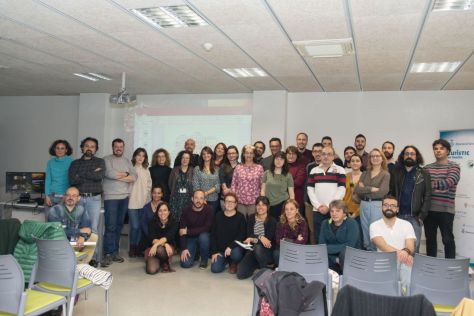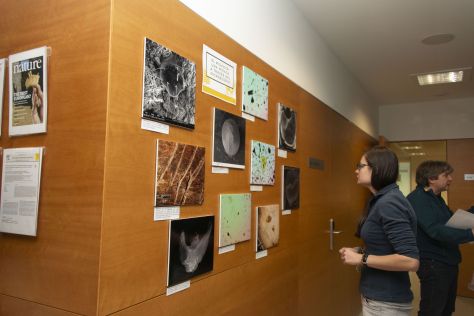NewsNext Previous
El Mirador cave at Atapuerca provides new data on the beginning of the farming practices at the Meseta
Tarragona has held a scientific transdisciplinary meeting on prehistoric farmers
IPHES (Catalan Institute of Human Paleoecology and Social evolution) has recently held a scientific workshop focused on the research on El Mirador cave (Atapuerca), organized by Ethel Allué (IPHES-URV), Patricia Martín (Universitat de Barcelona) and Josep Maria Vergès (IPHES -URV). The objective of this meeting was to encourage the discussion among assistants and stablish future collaborations to progress in the knowledge on the beginning of farming practices in the Meseta.
The scientific workshop had 13 oral communications in which 57 co-authors, coming from 14 national and international institutions, participated. A wide range of problematics was approached based on 21 disciplines. It is noteworthy the presence of researchers from IPHES and URV (Universitat Rovira i Virgili de Tarragona), such as Palmira Saladié (IPHES URV), Marina Lozano (IPHES URV), Isabel Expósito (IPHES) and Miquel Guardiola (IPHES). There were also contributions presented by doctoral researchers and Master students from the Erasmus Mundus in Quaternary Archaeology and Human Evolutionprogram, which is taught at URV thanks to the research, developed at IPHES. Some of the students developed their research on El Mirador cave.
Among the study scopes that have been analysed there were presentations on the paleoclimatic context and paleoenvironment provided by different interdisciplinary studies; agriculture and livestock practices, that were approached from archaeobotany, zooarchaeologyl, micromorphology, analytical chemistry and taphonomy on the formation of the fumier deposit (acumulation of burnt dung).

In addition, there were presentations on the cave as a funerary deposit and on the human remains. A diversity of subjects were discussed such as diet, pathologies, and genetics or ritual practices such as cannibalism. With the obtained data we were able to advance in the knowledge of human groups that lived in the cave between approximately 7.000 and 3000 years. There were also presentation on material culture including technology and ceramics.
El Mirador cave has been excavated since 1999 and has provided a sequence with Pleistocene and Holocene layers and is an essential sequence to understand specially the beginning of the introduction of agriculture and livestock practices of the Meseta. This cave was mainly used for sheep and goat stabling. These animals’s dung was systematically burnt in the cave to reduce volume and remove parasites. This process forms the so-called fumier deposits, being the one at El Mirador one of the best preserved. It is important to outline that during the Chalcolithic the cave was used as collective burial.

The participants came from several institutions, part of the Atapuerca Project, such as Jaime Lira (UCM-ISCIII) and Ángel Carrancho (University of Burgos), as well as other collaborators such as Ana Polo (University of Sheffield), Iñigo Olalde (Pompeu Fabra University), Javier Iglesias (Complutense University). The well-known geneticist Carles Lalueza-Fox (Pompeu Fabra University), who gave a keynote presentation, attended the meeting. The scientific meeting also included an exhibition of materials (“El Mirador: 20 years of research”) and two photographic series (“El Mirador: 20 years in 10 images” and “El Mirador: a look through the Microscope”).


